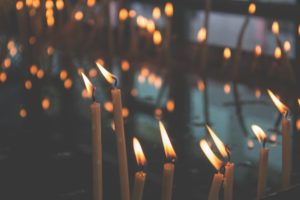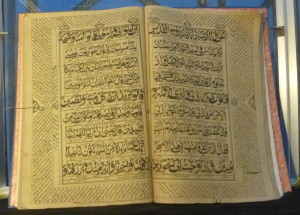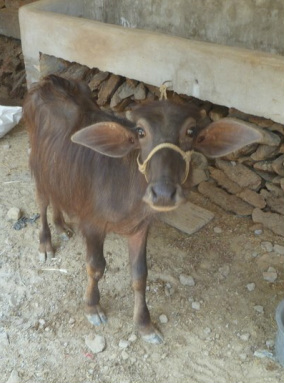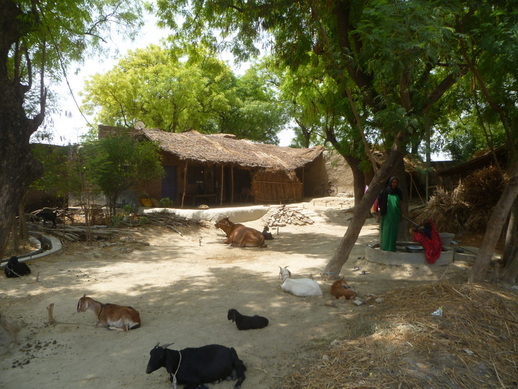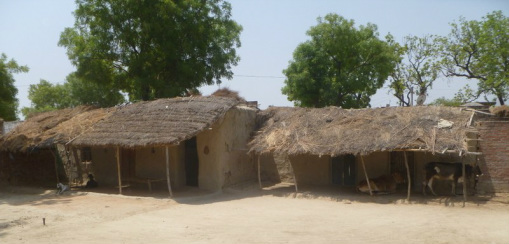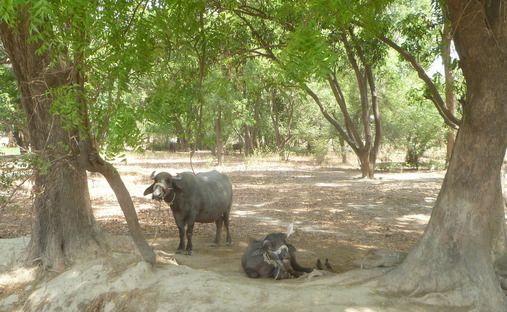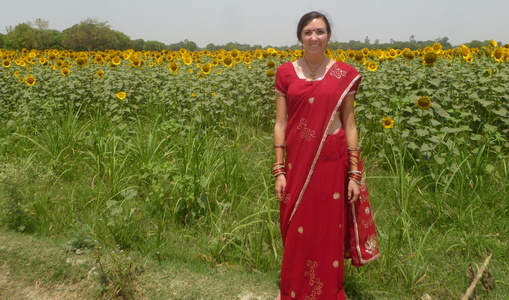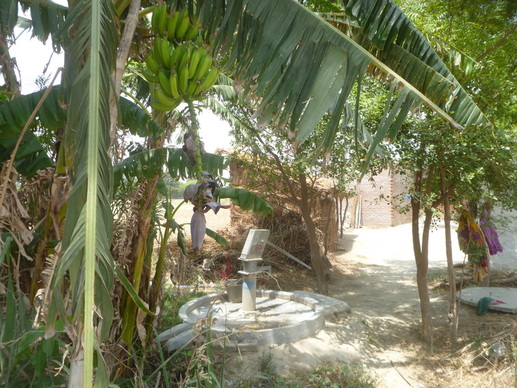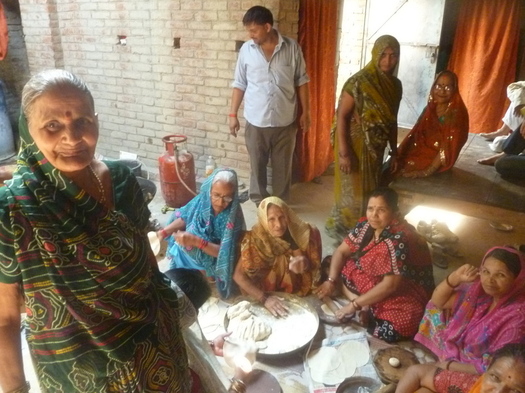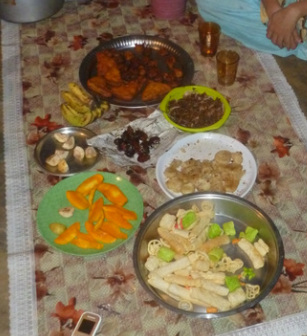We decided to try the fast that first day of Ramazan, just to see what it was like for our neighbors. We set our alarms to wake up at 2:45 am, early enough to make breakfast and eat before the first
azan, or call to prayer, reverberates through the the pre-dawn darkness and everyone stops eating or drinking anything for the next 16 hours—until the fourth call to prayer ends the fast a little after 7 pm. It was difficult to do, especially in such hot, muggy weather. We’re used to feeling hungry from time to time, but the most intense thing was the thirst. I was amazed by the way that our neighbors—and especially the women—go about their same routine of housework all day without food or water: scrubbing their family’s clothes, making food for small children or working men in their household who aren’t fasting, hauling water for cooking, bathing, and laundry, walking out in the sun to buy vegetables at the market.
Then, in the early afternoon, preparations begin for aftar (or iftar), the fast-breaking snacks that everyone eats in the evening before going to pray namaz and later having dinner. I spent hours at my friend’s house learning how to make the chana (spicy chickpeas), pakori (onions deep-fried in spicy chickpea flour), tamarind chutney, papar (deep-fried potato chips), and sarbat (lemonade) that people eat at iftar, along with fruit and dates and other tasty snacks. That evening, another family invited us to come over and break the fast with them. The mother of the family waited patiently for the azan, lost in silent prayer, while the younger children restlessly awaited the voice over the loudspeaker that would signal it was time to dig in. The call rose from the nearest minaret in melodic Arabic, “God is great…” and along with the thousands of others sitting together in their own houses throughout the community, we broke our fast with a date, then lemonade, fruit, and all the deep-fried goodness on the plates in front of us.
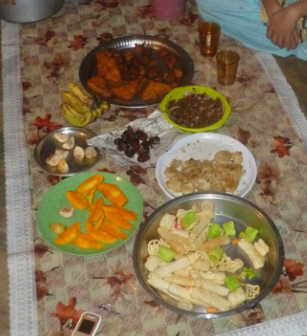
aftar (“iftar” in Arabic), fast-breaking food
We haven’t fasted since that first day, but we have continued to be welcomed into the celebration of
aftar with our neighbors. We’ve tried our hand at making a few
pakori ourselves, and we’ve run around delivering fruit and
pakori to different families as they send plates of their homemade
aftar to our house.
One night, we were invited to the home of a wealthy Muslim lawyer who lives nearby our slum and invites anyone who wants to come—mostly poor people from our community—to eat aftar, biryani, and sweets at his house. Despite our not having fasted and our complete ignorance of how to pray namaz, we were welcomed to eat, to watch, and to talk. That open feast for the poor reminded us a bit of the kind of party Jesus describes in Luke 14:12-14. Right after that grand feast, we had the experience of breaking the fast in a more humble setting with friends of ours who hadn’t made aftar most nights at all because of the expense. We chipped in supplies and they did most of the cooking, teaching me how to make even more kinds of ramazan treats. I love the patience and the devotion to God, the sacrificial hospitality, and the vigor of celebration that I saw in the way my neighbors observe Ramazan.
After a full month of fasting came three days of celebration: Eid. In preparation, everyone cleaned their homes from floor to ceiling, painted their houses in bold colors, and decorated with shiny paper with designs cut into it. The women stayed up all night preparing simai (a sugary dessert), pulki (a spicy yogurt curry), and mattar (peas—also spicy), and on that first day everyone dons expensive new clothes and goes out visiting one another, dressed to the hilt. Andy and I ate in fourteen different homes that first day alone, which made us feel very included and happy—but also VERY full, and a bit sick from the ridiculous blood sugar spike that so many servings of simai brought on!
On the second day, we participated in another Eid tradition: big family outings to different parks and attractions around the city. We went with a large family to the zoo, and since one of the sons in the family makes his living as an auto rickshaw driver, all 13 of us piled into his auto for the half-hour trip! The zoo was, well, a zoo—that’s really the best way to describe the atmosphere of noisy crowds packed in everywhere. I think at least a hundred other people from our slum must have been there; we ran into people we knew everywhere. It was a lot of fun to go around to all of the different exhibits with these incredibly excited kids (and excited parents) who had never been to a zoo in their lives and were fascinated by each new creature.
Eid is one of the few times that families in our community get a day off to do something fun together, and the zoo is one of the few fun places in the city that is cheap enough for almost anyone to afford, so we weren’t really all that surprised to see how crowded it was. We were a bit taken aback, though, to see how a giant playground inside the zoo drew even bigger crowds than the animal exhibits—and by the fact that most of the people making use of the equipment were teenage and adult men!
The third day of Eid was thankfully a bit more low-key, although house-to-house visiting and simai consumption continued. We’re glad to have been able to share another important cultural experience with our friends here, but also tired enough to be happy that all the celebration is over!
